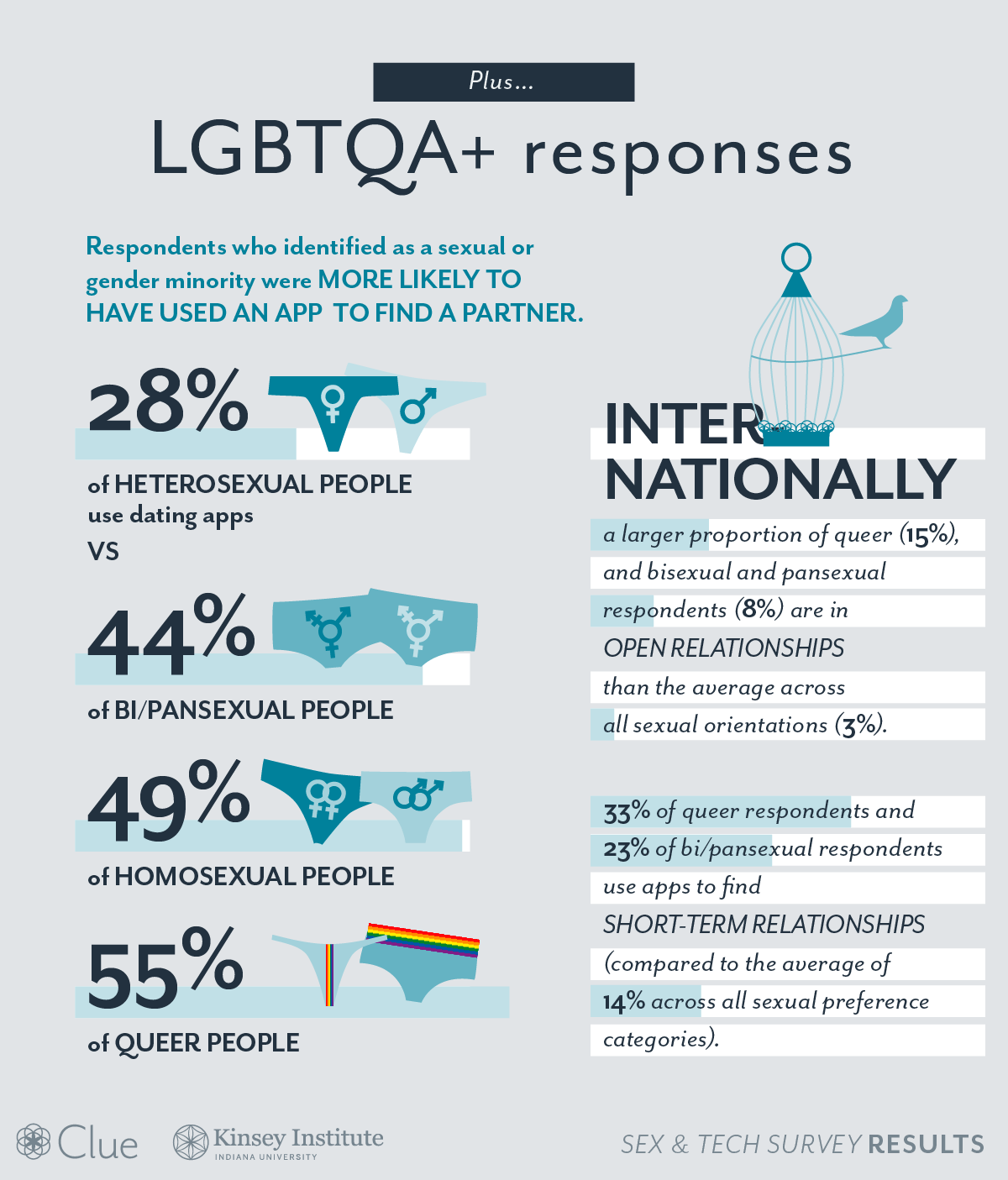Technology and sexuality: Results from Clue and Kinsey’s international sex survey
Technology is changing the way we live, and a big part of that includes the way we navigate our intimate relationships and sexuality. We’re interested in learning more about how people use technology for intimacy—to connect with potential partners, keep their relationships exciting, or track aspects of their sex lives.
Together with the Kinsey Institute, the world’s premier research organization for human sexuality and relationships, we conducted one of the world’s largest international sex surveys (translated into 15 different languages) to better understand how these technologies are being used, how they benefit their users, and how they might be improved.
Our survey received over 140,000 responses from 198 different countries. The results of the study, conducted throughout June 2017, reveal how people internationally incorporate and rely on technology in their sex lives, dating habits, and sexual education.

“Technology is tightly interwoven with our daily lives, and we use it to connect with and manage many of the things that are most important to us. As our survey shows, this includes love and sex — a large number of people engage with technology not only to meet partners, but also to learn more about sex, to track their own sexual experiences, and to improve their sexual relationships. While there are many reports on the consequences of technology on our private lives, these results relay a more positive story: that people are leaning on technology to help them create better experiences for themselves and their partners. By conducting research on the impact of technology on people’s sexual relationships, we’re beginning to better understand how these technologies are being used, what positive outcomes they may bring about, and how they might be improved.” - Amanda Gesselman, Research Scientist at the Kinsey Institute




Although the use of technology plays a significant role in the lives of young people now more than ever, the study was restricted to respondents who were 18 years of age or older. Because the study focused on romantic and sexual behavior, this restriction gives a clear picture of technology’s role in the private lives of adults, who are more likely to have the relevant life experiences.
The number of male and genderqueer/nonbinary respondents is statistically legitimate. It should be noted, however, that there were comparatively fewer participants in these categories (2,500 male respondents, and 2,100 genderqueer/nonbinary respondents, compared to 134,000 female respondents).
This is the second global survey conducted by Clue. The first, published in February 2016, investigated menstrual taboos across the world and found 5,000 euphemisms for “period.” The study looked into cultural norms surrounding comfort in talking about periods, likelihood of missing school/work due to menstruation, and more.
You can read the full PDF of results with commentary from Kinsey here.